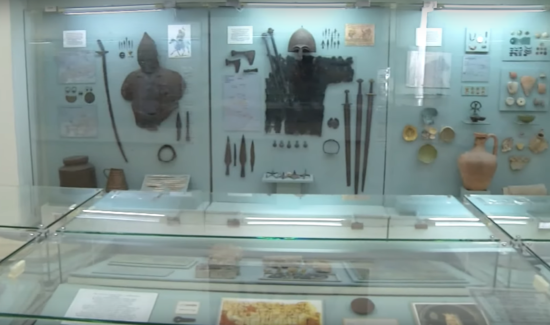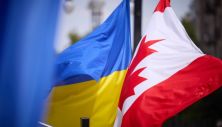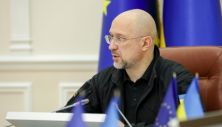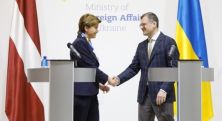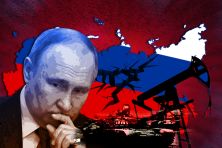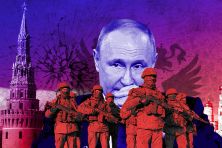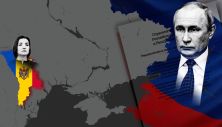From rustic and humble beginnings, the civilization of Kyivan Rus grew to be one of the strongest in the early medieval period.
Many people around the world know little about Ukraine’s golden past. What they do know is often shrouded in confusion, legend, and myth.
“People don’t know about the economical and political successes of Kyivan Rus. The military victories. We know them well, they are described very well. But people do not know about economy and politics,” ethnographer and Head of Production in Kyivan Rus Park, Oleksandr, said.
From the end of the 10th to the start of the 13th century, the city of Kyiv was a cultural center in Eastern Europe, a bastion of Christianity. it was the seat of power in a cosmopolitan and multi-ethnic Rus empire.
Ethnographers have debunked the Russian ethnic nationalist claim that all Eastern Europe has belonged to, and only belongs to pure Slavs.
“Historically, more than 25 ethnicities coexisted in peace. In the capital, Kyiv. And there were ethnicities that were, in terms of culture, absolutely opposite. Yet they managed to find some common grounds, ways to coexist in peace that served the state as well. We had a multi-national state and that is one of the successes of Kyivan Rus,” Oleksandr said.
In fact, the greatest leaders of the civilization came from Scandinavian lineages harking back to the Viking age.
But eventually, it all came crashing down when Kyiv was sacked by Mongols in 1240. This marked the end of Kyivan Rus, whose heritage fell to many smaller states. Its land was eventually split between Medieval Lithuania, Novgorod, Poland, and the Asiatic Khanates.
Moscow likes to claim that they are the sole successor of the Kyivan Rus State, however, the reality is far more complicated.
Kyiv and a majority of the people from the collapsed empire fell under the control of Lithuania for about 3 centuries. These groups endured years of rule by various political entities but eventually transformed into the nations of Belarus and Ukraine.
Moscow, despite attempts to claim unity with the old Kyivan Rus Empire, consisted of a foreign mix of cultures from Finno-Ugric tribes, Khazars and Novgorod.
“It is obvious that the population of the South Rus lands and the population of Northern Rus are different in terms of origin. All of these lands were united in a state by military means during the reign of Yaroslav and his descendants,” Senior Researcher of the National Museum of Ukrainian History Volodymyr Kolybenko said.
Even the languages between Kyiv and the northern city of Novgorod, claimed to be Moscow’s predecessor, were different.
“The Russian professor Zheleznyak, who studied the Old East Slavic language [Old Russian language], claimed that they even had different dialects. Roughly speaking, there were Novgorod, Kyiv or Chernihiv dialects, for example. They were all different forms of speech,” Kolybenko added.
Ultimately, Kyivan Rus was a very unique entity that has deep roots in Ukraine’s history.

